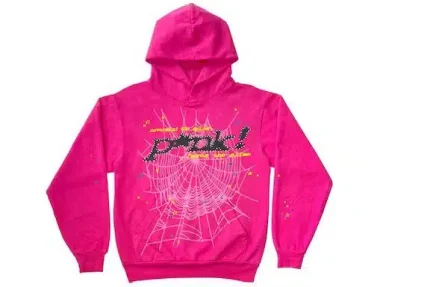From Gym To Street: The Tracksuit’s Fashion Trip

Once reserved for the locker room or routine, the tracksuit has undergone a radical transformation in the fashion world. From its athletic roots to the runways of Paris and the thoroughfares of New York, this humble two-piece set has readdressed the boundary between comfort and style. Moment, tracksuits are a staple in wardrobes around the globe, embraced by athletes, celebrities, and everyday fashion suckers alike. But how did we get there https://tracksuit.com.pk/
The Origins Utility and Sport
The tracksuit made its first appearance in the early 20th century, born out of pure function. Originally known as a “warm-up suit,” it was designed for athletes to wear before and after competition, keeping their muscles warm to help prevent injuries. The foremost duplications were simple, made from cotton or jersey, and prioritized practicality over aesthetics.
In the 1960s and 1970s, the growing popularity of sports like jogging, tennis, and track & field brought athletic wear into the public eye. Adidas, a rising brand at the time, revolutionized the tracksuit by introducing the now-iconic three-stripe design, frequently paired with matching pants and jackets. When Adidas signed a deal with German soccer legend Franz Beckenbauer in 1967, the tracksuit gained immense popularity, transcending its athletic origins into the realm of casual fashion.
The 1980s hipsterism- Hop and Street Cred
The 1980s marked a turning point in the tracksuit’s artistic status. As hipsterism-hopping surfaced from the thoroughfares of New York, it brought with it a distinctive style that emphasized authenticity, confidence, and individuality. Artists like Run-D.M.C., LL Cool J, and Salt-N-Pepa were frequently seen in matching Adidas or Puma tracksuits, complete with chunky gold chains and lurkers. The tracksuit went beyond athletic wear; it was a statement of identity.
This period was also significant for the emergence of tracksuits in civic culture. No longer just a symbol of athleticism, the tracksuit became a marker of cool, road expertise, and swagger. Brands caught on snappily, designing further various, totem-heavy performances that reverberated with the hipsterism-hop community and their suckers. Wearing a tracksuit meant aligning with a life, a culture, and a sense of rebellion.
The 1990s Mores and Sportswear Crossovers
During the 1990s, tracksuits evolved in tandem with the shifting geography of global fashion. A wide range of mores embraced them — from British ruffians and football fans to the American grunge scene and, indeed, suburban mothers.
In the UK, tracksuits became a crucial element of” chav” fashion, primarily associated with brands like Kappa, Umbro, and Reebok. The term “shell suit,” a literal interpretation of the tracksuit made from polyester, was widely popular, particularly among working-class youth. Meanwhile, rave culture, with its emphasis on comfort and vibrant colors, espoused tracksuits for their practicality and visual appeal.
At the same time, contrivers and luxury brands began to take notice. Tracksuits started to appear in more upmarket settings, incorporating elements of streetwear and high fashion in subtle, early ways. Nike and Adidas started to unite with creators and artists, blurring the lines between performance wear and style.
The 2000s Celebrities and the Juicy Couture Craze
Tracksuits underwent a massive resurgence in the early 2000s, thanks in large part to the influence of pop culture and celebrities. This was the period of Juicy Couture — the velour tracksuit brand that defined an entire generation of Y2K fashion. With its plush fabric, gemstone insignia, and light tinges, the Juicy Couture tracksuit became a go-to for Hollywood elites like Paris Hilton, Britney Spears, and Kim Kardashian.
This replication of the tracksuit was far removed from its athletic origins. It was unapologetically flashy, womanlike, and designed for visibility, not exercises. Juicy Couture transformed tracksuits into a lifestyle statement, a symbol of wealth, relaxation, and pop culture relevance.
At the same time, hip-hop continued to embrace the tracksuit, with artists like Jay-Z, Missy Elliott, and Eminem sporting satin tracksuit performances on stage and in music videos. Brands like Sean John, Rocawear, and Phat Ranch offered streetwear-inspired performances that intermingled hipsterism-hop-hop culture with refined luxury.
The 2010s Athleisure and the Normcore Revolution
The 2010s witnessed the rise of “athleisure,” a fashion trend that blended athletic wear with everyday attire. Tracksuits fit exactly into this new aesthetic. The trend was fueled by a growing emphasis on health, heartiness, and casual comfort, with millennials and Gen Z seeking apparel that could transition from the spa to brunch without missing a beat.
Tech-driven fabrics, minimalist designs, and celebrity signatures helped elevate the tracksuit once again—brands like Lululemon, Nike, Adidas, and newer players like Outdoor Voices capitalized on the trend. At the same time, high-fashion markers began incorporating tracksuits into their collections. Gucci, Balenciaga, and Vetements designed luxurious, large performances that came fashion statements in themselves.
Normcore — a trend that embraced anti-style and everyday fashion — also contributed to the tracksuit’s resurgence. What was formerly mundane came with enthusiasm. Influencers and road-style icons began mixing tracksuits with heels, fleece fleeces, or luxury handbags, adding new layers of discrepancy and irony.
The 2020s Pandemic Comfort and Fashion’s Great Reset
Still, the COVID-19 pandemicCOVID-19 delivered it. If the tracksuit ever demanded a final drive into mainstream fashion. Lockdowns, a work-from-home culture, and a collaborative longing for comfort made the tracksuit a global uniform. Suddenly, loungewear was not just respectable; it was essential.
Contrivers took notice. Tracksuits have become a symbol of our time: practical, comfortable, and adaptive. Brands launched capsule collections devoted to cozy sets and soft outlines. Matching sweatsuits in neutral tones were bestsellers. DroneDrone calls saw a surge in hoodie-and-track-pant duos, often paired with gold jewelry or designer spectacles for balance.
The tracksuit was also available in unisex sizes, transcending traditional fashion norms. Whether slim-fit or large, in silk, cotton, or coat, tracksuits spoke to a generation that valued freedom of movement, sustainability, and expression.
High Fashion Embraces the Tracksuit
The clearest sign of the tracksuit’s triumph is its grasp by luxury fashion houses. Designers such as Alessandro Michele (Gucci), Demna Gvasalia (Balenciaga), and Riccardo Tisci (formerly of Burberry) reimagined the tracksuit for the runway. In their hands, the humble two-piece came to symbolize fustiness, irony, and reinvention.
Gucci’s collaboration with Adidas fused nostalgia with high fashion, bringing antique-inspired tracksuits with decorative detailing to the forefront of style. Balenciaga’s large outlines and dystopian aesthetic made the tracksuit feel futuristic and avant-garde. Indeed, heritage brands like Dior and Prada experimented with tracksuit cuts, elevating them with acclimatized fits and luxuriant fabrics.
The tracksuit had officially crossed over — no longer a trend, but a dateless chief with endless rigidity.
Cultural Legacy and Symbolism
Beyond fashion, the tracksuit carries a deep artistic resonance. It has represented rebellion, relaxation, wealth, struggle, and power — frequently all at once. In film and television, characters in tracksuits( suppose The Sopranos, Rocky, or Squid Game) often embody complexity and contradiction.
The tracksuit’s versatility reflects societal changes — from strict dress codes to casual Fridays, from the fitness boom to the WFH revolution. It reflects shifts in class, culture, and gender identity. As fashion becomes increasingly popular and particular, the tracksuit represents both the history and the future of style.
Conclusion: The Tracksuit’s elaboration continues
The journey of the tracksuit — from sports fields to fashion centers — is a testament to its enduring appeal and transformative power. It has evolved across decades, societies, and cultures, constantly reinventing itself without losing its core substance: comfort and collaboration.
Momentarily, the tracksuit is more than a garment. It’s an oil font expression symbol of artistic identity, and a fashion trimmer that painlessly bridges the gap between spa and street. Whether you wear it for style, sport, or both, the tracksuit isn’t just having a moment; it’s made itself at home in the fabric of ultramodern life.




